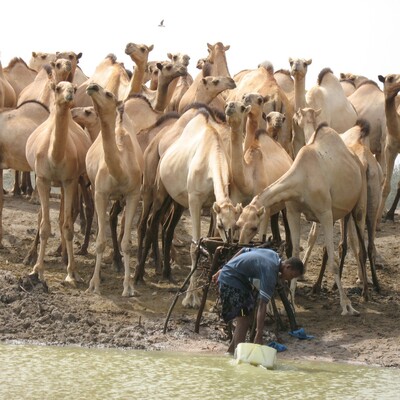

African swine fever
African swine fever, is a devastating and highly contagious viral disease of pigs, with no known cure or commercially available vaccine. It continues to threaten global pork production, with significant outbreaks recorded in Europe, Asia, and more recently the western hemisphere. In 2019 alone, China suffered an estimated $111 billion in economic losses. In response, the United States—home to a $7.7 billion pork industry—has committed $500 million toward ASF surveillance and prevention.
ILRI is actively engaged in ASF control through a multifaceted research programme spanning Africa and Asia. Key areas of work include:
- Gene editing for vaccine development: ILRI scientists are using advanced CRISPR-Cas technologies to explore gene-editing strategies aimed at developing a safe and effective ASF vaccine.
- Cross-protection studies: The team is evaluating whether vaccines based on the globally prevalent ASFV strain can protect against other genotypes circulating in Africa and Asia, a critical step toward a broadly protective solution.
- Biosecurity and disease control in India: In northeast India, where ASF outbreaks have severely impacted smallholder pig farmers, ILRI has partnered with local and national institutions to strengthen disease surveillance, improve diagnostic capacity, and promote practical biosecurity measures tailored to resource-limited settings.
Working alongside global and national partners, ILRI’s integrated approach addresses not only the scientific challenges of ASF but also its socio-economic and policy dimensions, contributing to long-term resilience in the pig sector.
Publications

A standardized pipeline for assembly and annotation of African swine fever virus genome
- Spinard, E.
- Dinhobl, M.
- Erdelyan, C.N.G.
- O’Dwyer, J.
- Fenster, J.
- Birtley, H.
- Tesler, N.
- Calvelage, S.
- Leijon, M.
- Steinaa, Lucilla
- O'Donnell, V.
- Blome, S.
- Bastos, A.
- Ramirez-Medina, E.
- Lacasta, Anna
- Ståhl, K.
- Qiu, H.
- Nilubol, D.
- Tennakoon, C.
- Masembe, C.
- Faburay, B.
- Ambagala, A.
- Williams, D.
- Ribeca, P.
- Borca, M.V.
- Gladue, D.P.

A rosin-functionalized plastic surface inactivates African swine fever virus
- Hemmink, Johanneke D.
- Shroff, S.
- Chege, Naomi
- Haapakoski, M.
- Dixon, L.K.
- Marjomäki, V.S.

Complete genome sequencing and comparative phylogenomics of nine African swine fever virus (ASFV) isolates of the virulent East African p72 genotype IX without viral sequence enrichment
- Domelevo Entfellner, Jean-Baka
- Okoth, Edward A.
- Onzere, C.K.
- Upton, C.
- Njau, E.P.
- Höper, D.
- Henson, Sonal P.
- Oyola, Samuel O.
- Bochere, Edwina
- Machuka, Eunice M.
- Bishop, Richard P.

Transcriptome profiles of organ tissues from pigs experimentally infected with African swine fever virus in early phase of infection
- Sang-Ik Oh
- Sheet, S.
- Vuong Nghia Bui
- Duy Tung Dao
- Ngoc Anh Bui
- Tae-Hun Kim
- Cha, J.
- Mi-Rim Park
- Tai-Young Hur
- Young-Hun Jung
- Kim, B.
- Hu Suk Lee
- Cho, A.
- Lim, D.





























